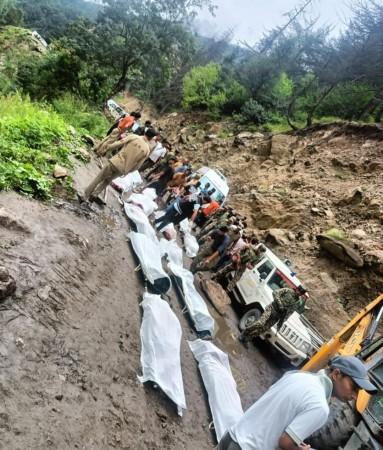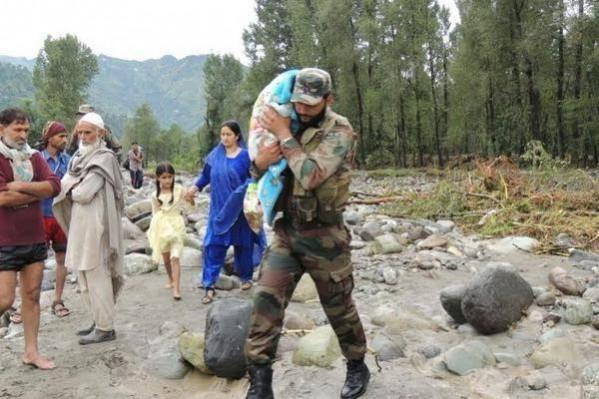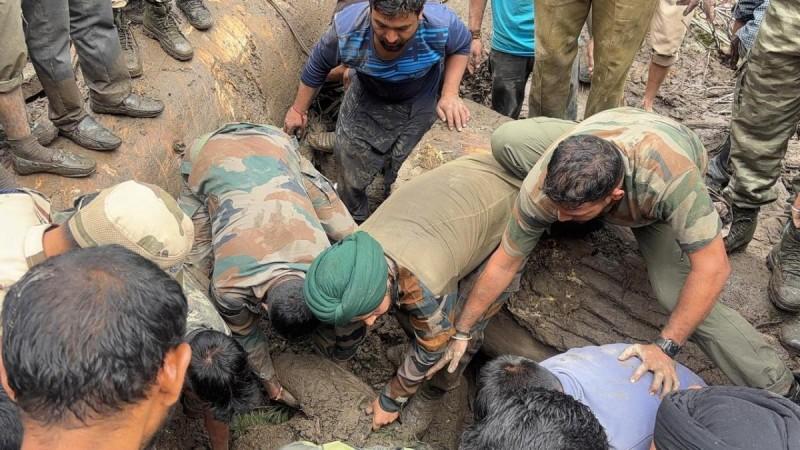
Amidst death and destruction caused by a catastrophic cloudburst in Chishoti village of Jammu and Kashmir's a miracle unfolded—rekindling hope in a place shrouded in despair.
Subhash Chandra, a humble langar sevak who had dedicated years of his life to serving Machail Mata pilgrims, was pulled out alive from beneath a mountain of debris—nearly 30 hours after being buried by the flash flood and landslide.
His survival, against all odds, has moved the locals, many of whom believe it to be nothing short of divine grace.
"Whom Machail Mata protects, no force can harm," said local MLA and Leader of Opposition in J&K Legislative Assembly Sunil Sharma, quoting an age-old saying that now feels more true than ever.

On August 14, around 12:25 PM, a sudden cloudburst triggered massive flash floods that ravaged the serene valley of Chishoti, turning it into a scene of unimaginable destruction. At the time of the disaster, Subhash was serving langar (community meals) to hundreds of devotees—a service he had been quietly doing for years. Survivors recount that nearly 200–300 pilgrims were at the langar site, while over 1,000 were scattered across the area for the Machail Mata Yatra.
The floodwaters swallowed everything in their path—16 homes, three temples, a makeshift marketplace, a 30-meter bridge, watermills, vehicles, and the entire langar setup. Amidst the chaos, four dead bodies were recovered near Subhash's location, but somehow, he survived.
Teams from the Army, Police, NDRF, SDRF, and local volunteers worked tirelessly to clear the debris. After hours of digging, they heard faint signs of life—Subhash was alive, dehydrated, injured, but breathing. One Army officer described the moment with awe, "This is the first time we've recovered a survivor during this entire operation. It feels like a miracle."

Subhash was rushed to a hospital for immediate treatment and later transferred to the Kishtwar District Hospital. Officials confirmed that his injuries were not serious, and he was soon discharged. Nayab Tehsildar Sushil Kumar said that Subhash's survival has lifted the spirits of both the rescue teams and the grieving village.
The emotional resonance of this rescue runs deep. Many locals believe Subhash's selfless service to the pilgrims earned him the protective hand of the divine.
"It is the reward for his years of devotion," said a resident tearfully. "He has fed and cared for thousands. Today, Machail Mata saved her sevak."
Meanwhile, the scale of the tragedy continues to unfold. So far, at least 60 people have died, over 100 are injured, and 82 are still missing, most of them pilgrims. Search and rescue efforts are ongoing, with occasional breakthroughs—four more bodies were recovered on Saturday.
Union Minister Dr. Jitendra Singh, addressing the media in Jammu, said the devastation is unprecedented. He confirmed the extent of the destruction and assured that relief and rescue operations are being carried out on a war footing.
The annual Machail Mata Yatra, which began on July 25 and was scheduled to continue until September 5, has now been suspended for the third consecutive day due to the disaster.
Chishoti, located 90 kilometers from Kishtwar and 9,500 feet above sea level, is the gateway to the revered Machail Mata temple. The last 8.5 kilometers of the journey is an arduous mountain trek. This path, once filled with the chants of pilgrims, now lies in silence—broken only by the sound of helicopters, rescue calls, and prayers whispered in hope.
As the rescue teams dig through debris and families wait for news of their loved ones, the story of Subhash Chandra stands as a beacon of hope—a reminder that even in the darkest moments, grace can shine through.

















